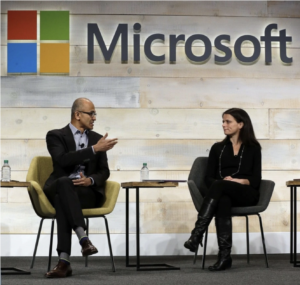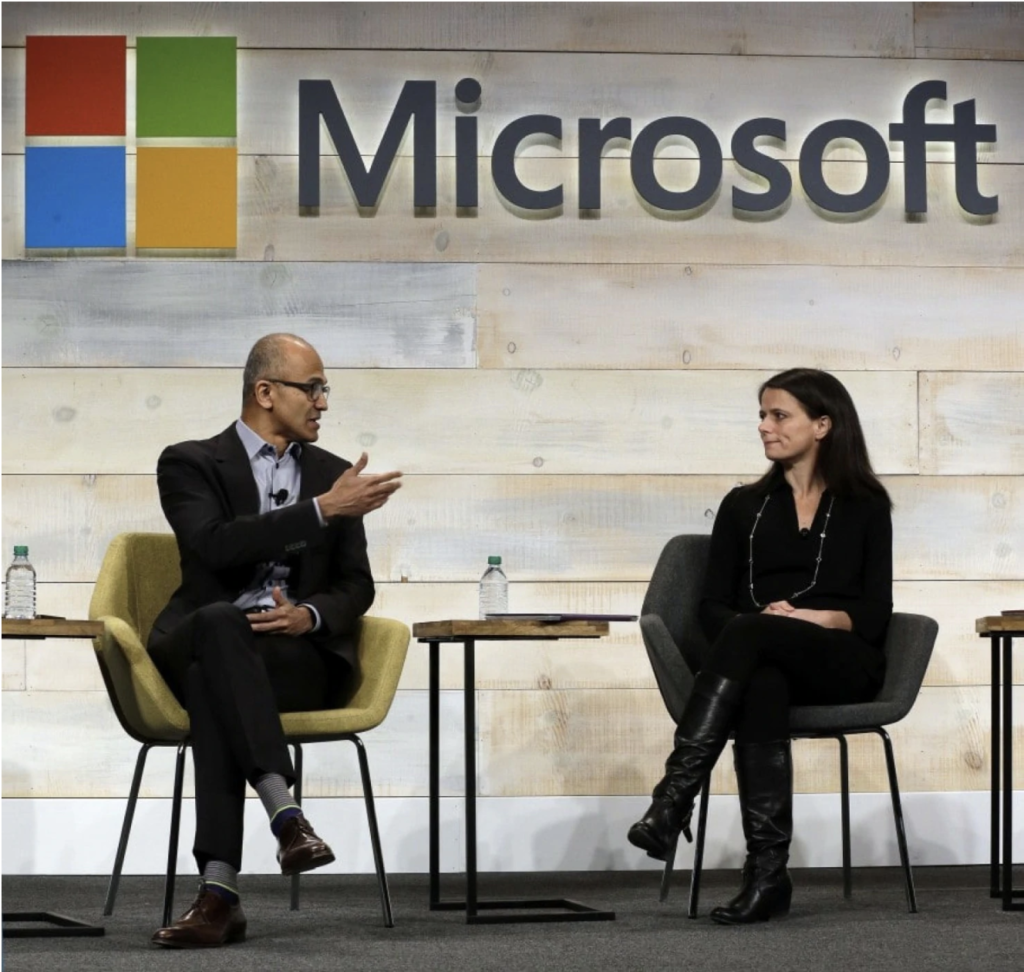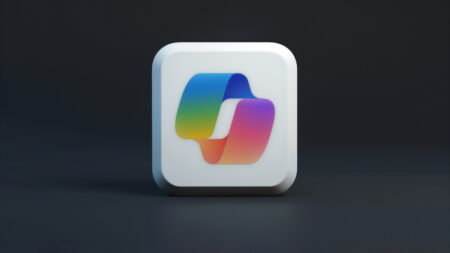With its commercial-cloud business now generating almost one-third of its total calendar-2018 revenue of $104 billion, Microsoft is pulling away from mighty Amazon and every other competitor in the Cloud Wars as its hybrid architecture, broad product lineup, bold M&A moves and innovative go-to-market plans continue to drive hypergrowth in the cloud even at its current massive scale.
For calendar 2018, Microsoft posted commercial-cloud revenue of $32.3 billion, up 48% and driven by the booming demand for its Azure Cloud services, whose revenue surged 76%.
Amazon’s AWS cloud unit posted full-year revenue of $25.7 billion as it closed another outstanding year marked by 47% revenue growth—yet Amazon still slipped farther behind Microsoft in the hotly contested race to help companies become digital businesses by harnessing the power of the enterprise cloud, AI, IoT and other modern technologies.

Beyond the numbers, though, Microsoft’s stellar results reflect a relentless ability to meet a growing number of the needs and desires of the fast-changing business community across every industry and every region of the world.
And that’s the topic to be explored today in Cloud Wars: what is Microsoft doing to create those gaudy results, how is it differentiating itself from its worthy competitors, and why are companies with a vast array of cloud vendors from which to choose giving more and more of their business to Microsoft?
From last week’s earnings call, I’ve extracted 10 core answers to those questions—here’s the quick list and then I’ll go into each in a bit more detail. Each of these 10 insights will include comments from CEO Satya Nadella and CFO Amy Hood from throughout the earnings call.
10 Top Reasons Why Microsoft Is Winning The Cloud Wars
- Microsoft’s got the digital tools that businesses want and need.
- Hybrid computing is the enterprise model for the digital age.
- Azure spans that entire landscape—and is growing at 76%.
- Winning at the edge: beyond data to intelligence and experiences.
- Developers have become hugely important in the digital age.
- Microsoft 365 and Office 365 Commercial: onramps to the cloud and increasingly powerful components for digital business.
- Expanding its total addressable market with 2 billion first-line workers.
- LinkedIn: the $25-billion bet is paying off in multiple ways.
- Creating “systems of observation” and also “systems of intelligence.”
- A vast and highly motivated network of global partners.
- Microsoft’s got what businesses want. As every business becomes a digital business, Microsoft has the best set of cloud and hybrid offerings to address the increasingly diverse needs of those going-digital organizations. From CEO Satya Nadella and CFO Amy Hood throughout the earnings call:
- Asked about what’s behind the huge cloud deals Microsoft has recently signed, Nadella said, “So it is true that the deals are much broader, much deeper—and the relationships with those customers span a lot more of our capability and also drive a lot more of their own ambition…. We have a lot of different types of business that we do with customers, which may include some things like refreshes of their on-premise infrastructure all the way to some very high-ambition digital transformation projects.”
- “When I look at how every business is becoming a digital business and then I map that opportunity to our capabilities, we just have the broadest platform of anyone in the tech sector to be able to really help every customer in every country become that digital business. And on top of that, we have the business model that aligns with them and their interests and their trust.”—Nadella
- “Microsoft 365 empowers everyone—enterprises, small businesses and more than 2 billion first-line workers—with an integrated and secure experience that transcends any single device.”—Nadella
- Office 365 Commercial revenue increased 34%, Hood said.
- Dynamics 365 revenue up 51%: “More than 9 out of every 10 new Dynamics CRM customers chose our cloud offering.”—Hood
- Hybrid computing is the enterprise model for the digital age. It’s a theme that Microsoft has hammered on for the past few years, and as businesses realize they need to create their own blend of cloud and on-premises technologies, hybrid becomes increasingly essential and strategic.
- “Strong execution and continued customer demand for our hybrid-cloud offerings drove another quarter of double-digit top- and bottom-line growth.”—Hood
- For Microsoft’s Intelligent Cloud segment, Hood said revenue of $9.4 billion was up 21 % and “ahead of expectations, driven by continued strength in our hybrid solutions. Server products and cloud services revenue increased 24%…. In our on-premises server business, continued customer demand for flexible hybrid solutions and our premium offerings drove growth of 3% and 4% in constant currency.”
- Azure spans that entire landscape—and is growing at 76%. Consistency, predictability, compatibility, pervasiveness—Azure is the key in Microsoft’s ability to help customers blend their journeys to the cloud with journeys to hybrid computing.
- “Azure is the only hyperscale cloud with a consistent computing stack that extends from the data center to the edge, and customers across every industry are recognizing this architectural advantage.”—Nadella
- “Commercial bookings were strong, growing 22% in constant currency driven by solid renewal execution and an increase in the number of larger, longer-term Azure contracts.”—Hood
- “Then on top of that, of course, all this compute means it’s being used with data. So with the data estate, one of the biggest things that happens is people consolidate the data so they can reason over it. And that’s where things like AI services get used. So we definitely see the path where they’re adopting the layers of Azure. But it doesn’t stop in Azure.” –Nadella
- Winning at the edge: beyond data to intelligence and experiences.
- “We’re accelerating our innovation in emerging workloads like IoT and edge AI. At CES, our partners showcased how Azure IoT and Azure AI are enabling them to build new connected devices and experiences that span the cloud and the edge from connected homes to cars to smart cities. And just this month, Starbucks chose Azure Sphere to secure its business-critical edge devices in its stores.” –Nadella
- Developers become hugely important in the Digital Age.
- “Developers will increasingly drive the influence business, and will influence business processes and functions across every organization. And we are committed to giving developers the tools they need to be productive on any platform… GitHub has more than 31 million developer accounts and recently surpassed 100 million code repositories, a major milestone. Development teams at more than half of the Fortune 50 do their work in GitHub Enterprise.” –Nadella
- “Our Power platform—spanning Power BI, Power Apps and Flow—enables anyone in an organization to start building an intelligent app or workflow where none exists. It is the only solution of its kind in the industry, bringing together no-code or low-code app development, robotic process automation and self-service analytics into a single comprehensive application platform.” –Nadella
- Microsoft 365 and Office 365 Commercial: no longer simply onramps to Azure, but unique sources of transformative value to large organizations.
- One of the very first points Nadella made in his opening remarks on the earnings call was this: “Microsoft 365 empowers everyone—enterprises, small businesses, and more than 2 billion first-line workers—with an integrated and secure experience that transcends any one device. We are helping every business build out their system of communication and collaboration to drive their productivity as well as their business transformation.”
- Office 365 Commercial revenue increased 34% as customers migrated to higher-value versions, Hood said.
- Huge expansion of total addressable market by addressing unique needs of 2 billion first-line workers. They’re not behind desks and they don’t use PCs or notebooks, but new approaches to meeting the needs of these 2 billion workers in retail, healthcare, manufacturing and other sectors is a huge opportunity for Microsoft. In addition to pushing Microsoft 365 as the mobile security solution for this huge new market, Teams and other tools can be adapted for the unique needs of those first-line workers, Microsoft believes.

Satya Nadella
- “We are seeing rapid adoption of Teams with more than 420,000 organizations of all sizes and 89 of the Fortune 100 using Teams, including customers like Pfizer, who chose Teams as the collaboration platform for their 115,000 employees. And, we are expanding into new and under-penetrated markets.” –Nadella
- “One of the challenges in retail and in many other industries is to identify the messaging tool that has actually got the security framework they expect of any other enterprise tool as opposed to using one of these consumer messaging tools, which then puts all of the liability on the enterprise. So that’s the opportunity we see, whether it’s — for all front line, whether it’s in manufacturing, whether it’s in retail, whether it’s in healthcare. So that’s the TAM expansion.” –Nadella
- “It can start with some of our devices for the first-line worker. For example, one of the areas where we see the most traction for HoloLens is with first-line workers. People in manufacturing and others in field service, where they were never issued a standard laptop or even a phone, are being issued a HoloLens as their first computing device, and that’s just because of the productivity it drives.”–Nadella
- LinkedIn: the $25-billion bet pays off in multiple ways. First off, the professional network now has 610 million members, and its rapid growth shows no sign of slowing. And new revenue opportunities connected to SaaS apps also continue to grow.
- “We continue to generate strong revenue growth across all businesses, with sessions growth of 30% year-over-year fueled by record levels of engagement in the feed and content shared across the platform. We also saw record job postings again this quarter.” –Nadella
- The recent acquisition of Glint “broadens our market opportunity with its industry-leading employee engagement platform. At a time when competing for talent and skill development is a priority for every leader, the combination of LinkedIn Talent Solutions, Talent Insights, LinkedIn Learning and now Glint helps every business attract, retain and develop the best talent in an increasingly competitive jobs marketplace.”–Nadella
- “Systems of Observation” and “Systems of Intelligence.” These terms reflect Microsoft’s rapidly growing ability to drive the narratives and conversations in the marketplace by spotting and bringing clarity to new concepts before its competitors can do so, in this case with SaaS apps and the value they can impart.
- “Dynamics 365 grew 51% this quarter as we won customers with our differentiated approach to systems of record and systems of engagement by making them more modular, extensible and AI-driven. Increasingly, business-process automation includes digitizing physical spaces, activities and interactions. Dynamics 365—along with advances in Azure IoT, AI and Mixed Reality—are leading the way for organizations to create these new systems of observation and systems of intelligence that drive end-to-end business processes and bridge the online and off-line worlds.” –Nadella
- A vast and highly motivated network of global partners.
- “Leading companies in every industry are partnering with us to build their own digital capability to compete and grow. This is creating a broad opportunity for everyone, including our ecosystem. As one example, the co-sell program we introduced 18 months ago has already generated $8 billion in contracted partner revenue.” –Nadella
(Disclosure: At the time of this writing, Microsoft was a client of Evans Strategic Communications LLC.)
Subscribe to the Cloud Wars Newsletter for twice-monthly in-depth analysis of the major cloud vendors from the perspective of business customers. It’s free, it’s exclusive, and it’s great!
*******************
RECOMMENDED READING FROM CLOUD WARS:
The World’s Top 5 Cloud-Computing Suppliers: #1 Microsoft, #2 Amazon, #3 Salesforce, #4 SAP, #5 IBM
Amazon Versus Oracle: The Battle for Cloud Database Leadership
As Amazon Battles with Retailers, Microsoft Leads Them into the Cloud
Why Microsoft Is #1 in the Cloud: 10 Key Insights
SAP’s Stunning Transformation: Qualtrics Already “Crown Jewel of Company”
Watch Out, Microsoft and Amazon: Google Cloud CEO Thomas Kurian Plans To Be #1
The Coming Hybrid Wave: Where Do Microsoft, IBM and Amazon Stand? (Part 1 of 2)
Oracle, SAP and Workday Driving Red-Hot Cloud ERP Growth Into 2019
*********************








